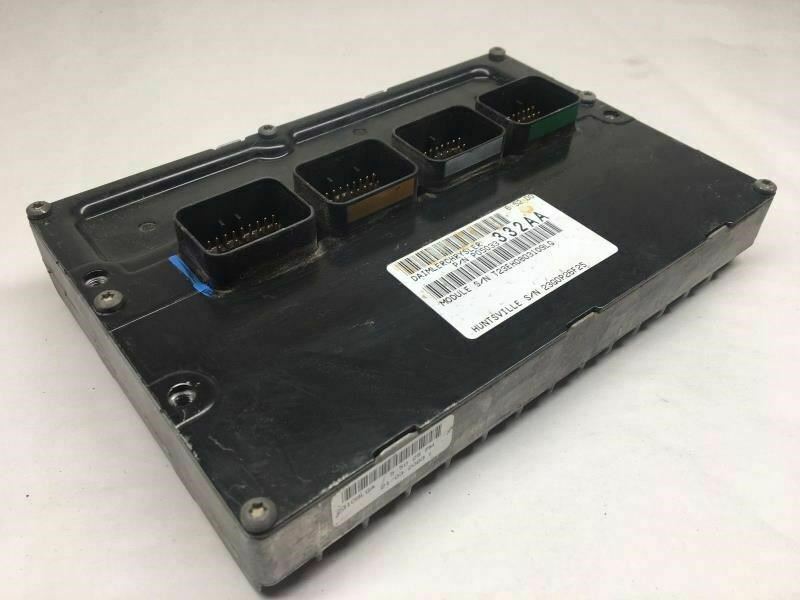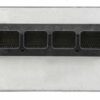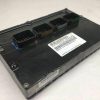Is your 2004 Dodge Durango giving you headaches with stalling, a persistent check engine light, or refusing to start? It’s frustrating when you can’t rely on your truck. This isn’t just an inconvenience; it’s a disruption to your life. You need a straightforward, reliable solution that gets you back on the road without the hassle and expense of a dealership visit. This is the definitive fix you’ve been searching for.
Common Symptoms & Your Direct Solution
If you’re experiencing any of the following issues, a failing Engine Control Module (ECM) is the most likely culprit. This professionally programmed unit is designed to permanently resolve these problems:
- Erratic or rough idling
- Sudden stalling or engine shut-offs
- Complete no-start condition
- Check Engine Light with communication-related trouble codes (e.g., P0601, P0605)
- Poor fuel economy and reduced engine performance
- Inconsistent automatic transmission shifting
Instead of gambling on a used part from a junkyard that will require expensive programming, this 2004 Dodge Durango 4.7L engine computer arrives at your door ready for a simple, direct installation.
Features & Benefits
- ✔ Ready to Install: This computer is professionally programmed to your vehicle’s specific VIN and mileage. No extra steps needed.
- ✔ True Plug & Play: Simply disconnect the old unit and plug this one in. It’s designed for a seamless, hassle-free installation that you can do yourself.
- ✔ Skip the Dealership: Avoid costly dealership programming fees and long wait times. This is the most efficient way to get your Durango running right again.
- ✔ Guaranteed Compatibility: This unit is a direct replacement for a wide range of part numbers, ensuring a perfect match for your vehicle.
- ✔ One-Year Protection: This unit is backed by our one-year replacement warranty, giving you confidence and peace of mind in your repair.
Expert Insight: The Critical Role of VIN Programming
As a technician, I’ve seen countless vehicle owners try to save a few dollars with a non-programmed computer. It almost never works. Your Durango’s ECM is the brain of the operation; it communicates with the transmission, security system, and dozens of sensors. Our VIN-specific programming ensures all these systems handshake correctly from the moment you turn the key. It’s not just about making the engine run; it’s about restoring the entire vehicle’s integrated system to factory specifications for optimal performance and reliability. This is the key to a lasting, trouble-free repair.
By choosing our pre-programmed 2004 Dodge Durango 4.7L engine computer, you’re not just buying a part; you’re investing in a dependable solution that restores your vehicle’s performance and your confidence behind the wheel. Stop wrestling with symptoms and get the definitive fix. We make it simple to get your truck back to being the reliable workhorse you depend on every day. This is the correct 2004 Dodge Durango 4.7L engine computer for a lasting repair.
Frequently Asked Questions
What exactly does “Plug & Play” mean?
It means the engine computer will arrive at your doorstep fully programmed with your vehicle’s specific VIN and mileage. All you have to do is disconnect the battery, remove your old computer, install this one, and reconnect the battery. No dealership visits or special tools are required for programming.
What information do you need from me after I order?
After you place your order, we will need your vehicle’s 17-digit Vehicle Identification Number (VIN) and the current mileage. This allows us to program the computer so it communicates perfectly with your Durango’s existing systems.
Will this computer fix my check engine light?
If the check engine light is caused by a faulty engine computer (often indicated by internal processor error codes like P0601), then yes, this part is the correct solution. However, it’s always wise to have your codes scanned to ensure the ECM is the root cause of the issue.
How do I find my original part number to confirm a match?
Your original part number is printed on a sticker on the engine computer itself. You can compare it to the list of compatible part numbers in our description to ensure a perfect match, although as long as your vehicle is a 2004 Durango with the 4.7L engine and 4×2, this unit is the correct one.
Do I need to send my old computer back?
No core charge or return is required for this part. You can keep or recycle your old computer at your convenience.


